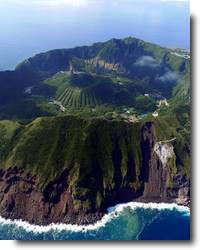Garden design is an important Japanese
art form that has been refined for more than 1000 years. Gardens have evolved into a
variety of styles with different purposes, including strolling gardens for the recreation of
Edo Period lords and dry stone gardens for the religious use by
Zen monks.
Great gardens can be found throughout Japan, with particularly many in the former capital of
Kyoto.
Below are Japan's best gardens according to japan-guide.com's editors and users:
 | 1. Kenrokuen
Built in Kanazawa for the enjoyment of the former feudal lords, Kenrokuenfeels like a collection of multiple excellent gardens that include a variety of ponds, streams, hills, groves, flower gardens and several pavilions and tea houses.
|
|
|
|
|
|
 | 4. Kokedera
The moss covered garden of Kyoto's Kokedera (Moss temple) is one of the country's most celebrated. Advance reservations by mail and participation in a sutra copying session are required to see the garden.
|
|
 | 5. Ritsurin Koen
The recreational garden of the former local lords, Ritsurin Koen inTakamatsu is one of the most beautiful strolling gardens in Japan, featuring ponds, tea pavilions and walking trails.
|
|
 | 6. Ryoanji
Kyoto's Ryoanji Temple is home to the most famous of all stone gardens in Japan. Try to visit on weekdays in the early morning or late afternoon to reduce the crowds.
|
|
 | 7. Korakuen
Korakuen is another of the best strolling gardens of Japan. It stands next toOkayama Castle whose former residents would use it for the entertainment of guests and themselves.
|
|
 | 8. Daitokuji
Daitokuji Temple is the ultimate destination for those interested in Zen gardens. Consisting of nearly two dozen subtemples, Daitokuji offers a large number and variety of excellent gardens.
|
|
|
|
 | 10. Byodoin
Byodoin is the best surviving example of a Pure Land Garden. Its celebrated Phoenix Hall appears on the 10 yen coin. A unique museum with temple treasures stands nearby.
|
|
Japanese Gardens
With a foundation of the religious devotion to gods dwelling in nature, Japanese gardens are a spatial art created to reflect social and cultural background and ideas. Items of nature such as plants, the landscape, and rocks are positioned sometimes delicately, sometimes boldly, to shape the garden.
A representative example of Japanese gardens is the "karesansui," or dry garden. This is devoid of embellishments, doesn't use water, and is rendered with white sand, stones, and the landscape to portray nature. Rather than walking in this type of garden, value is placed on mental images evoked by reflecting on oneself while gazing at it.
Ornamental Fish Introduced from China: Nishiki (Golden) Carp

Originally from China, carp have been popular as ornamental fish among aristocrats since the Heian period (794-1185). In the Edo period(1603-1867), breeding produced a more brightly colored fish, resulting in the beautiful Nishiki carp of today. There are over 80 varieties of Nishiki carp, and their sizes also widely vary, from 10 cm to 1 m long.


